Gold prices bounce off 3-week lows; demand likely longer term
Duke Energy Corporation (NYSE:DUK) delivered a strong start to 2025, reporting first-quarter adjusted earnings per share of $1.76, a 22% increase from $1.44 in the same period last year. The company reaffirmed its full-year 2025 adjusted EPS guidance range of $6.17-$6.42 during its earnings presentation on May 6, 2025.
Quarterly Performance Highlights
Duke Energy’s first-quarter results demonstrated significant improvement across key business segments. The Electric Utilities & Infrastructure segment contributed an additional $255 million (+$0.33 per share) compared to the prior year quarter, driven by favorable weather conditions, rate case implementations, and increased volumes. The Gas Utilities & Infrastructure segment added $65 million (+$0.08 per share), primarily due to rate cases and riders, partially offset by higher depreciation expenses.
As shown in the following quarterly earnings summary:
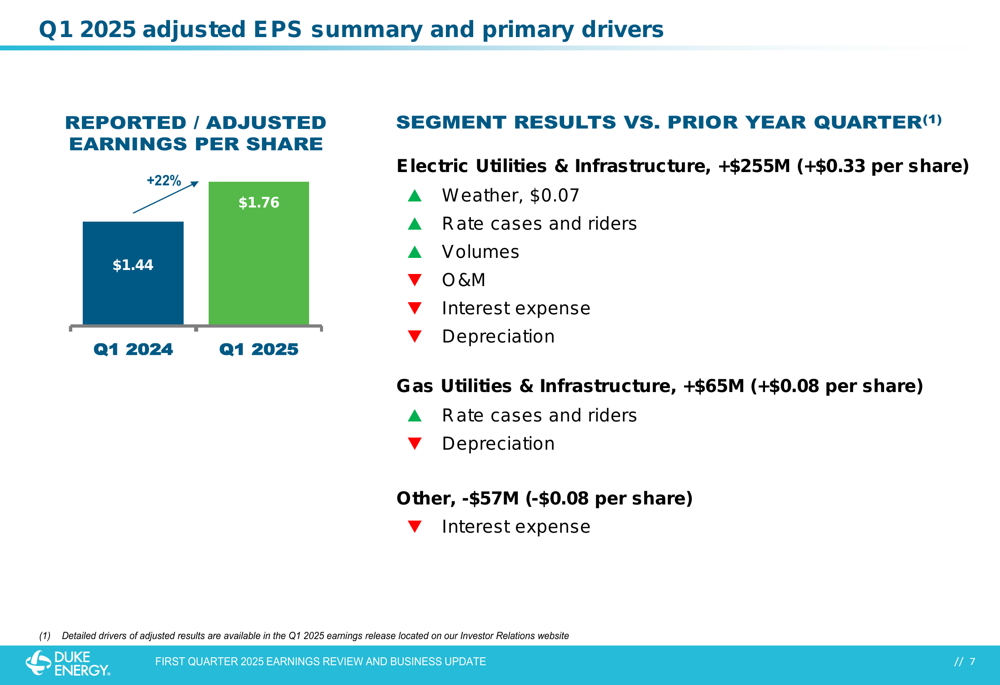
Retail electric volumes grew by 1.8% on a weather-normalized basis compared to 2024, with residential volumes showing particularly strong growth at 3.4%. Commercial and industrial volumes increased by 0.7%. This growth was supported by customer additions of approximately 2.3% in the Carolinas and 1.7% in Florida and Indiana.
The company’s economic development pipeline appears robust, with Duke Energy signing new letter agreements for approximately 1 GW of data centers in April alone. This activity supports the company’s projections for accelerated load growth beginning in 2027.
The following chart illustrates Duke Energy’s volume trends and load growth projections:
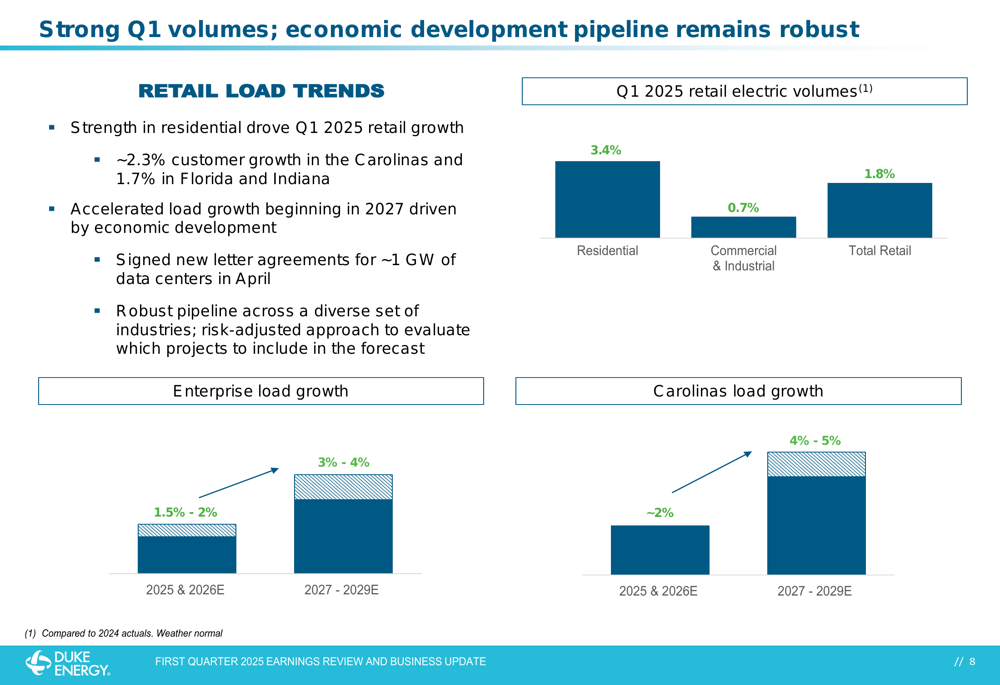
Strategic Initiatives
Duke Energy outlined its strategy to meet growing customer demand through a combination of maximizing its existing fleet and developing new generation resources. The company received approval in March for subsequent license renewal for the Oconee nuclear station (approximately 2,600 MW) and filed for similar renewal for the Robinson nuclear plant in April. Management indicated plans to seek subsequent license renewals for all 11 of its nuclear reactors.
The company’s generation strategy is illustrated in this slide showing key initiatives:
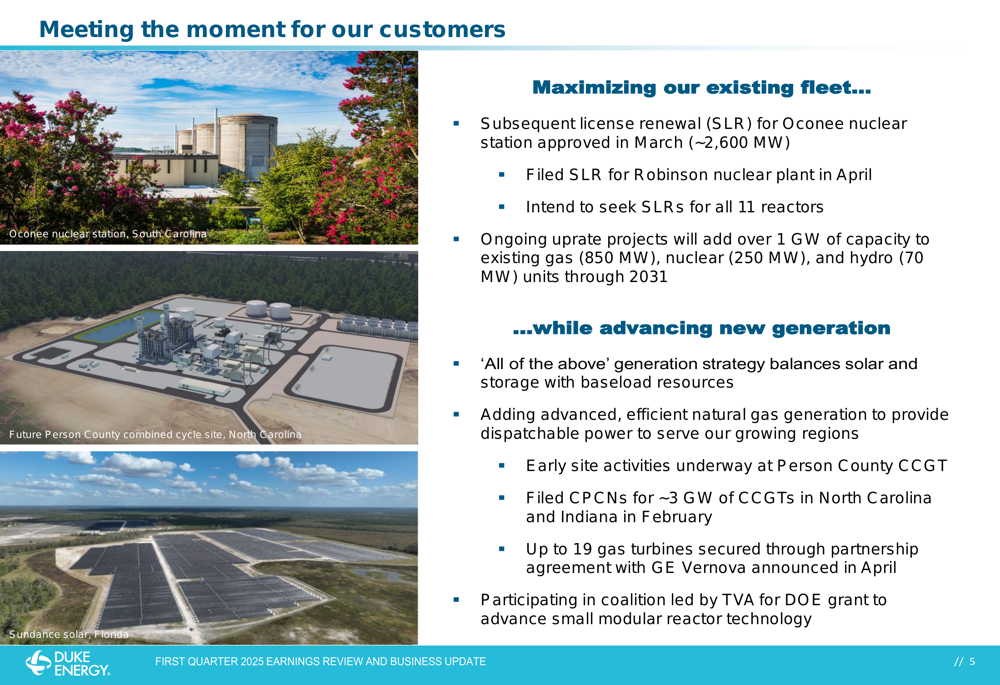
Duke Energy is advancing an "$83 billion five-year capital plan (2025-2029)" focused on transforming approximately 320,000 miles of power lines, building new generation capacity, and modernizing natural gas distribution infrastructure. The capital expenditure allocation shows a significant focus on grid modernization (45%) and regulated zero-carbon generation (27%).
The following chart breaks down the company’s capital expenditure plans:
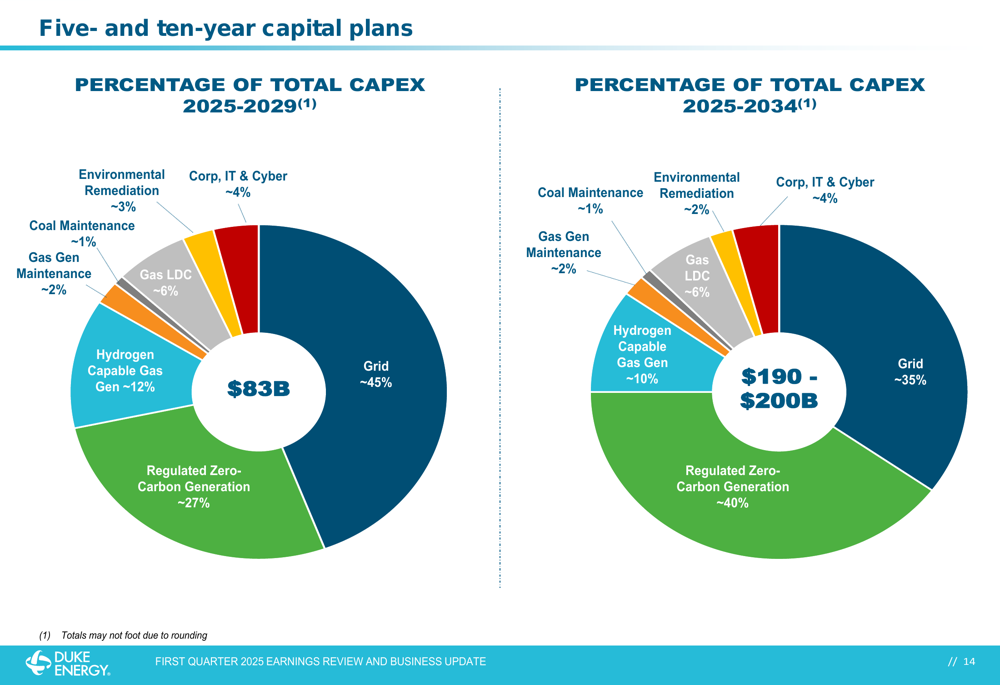
Financial Outlook and Credit Initiatives
Duke Energy reaffirmed its long-term EPS growth rate of 5-7% through 2029, based on the midpoint of its 2025 guidance range ($6.30). The company highlighted its progress on credit supportive initiatives, stating it remains on target to achieve a 14% funds from operations (FFO) to debt ratio by the end of 2025, with expectations for this metric to improve further over the five-year plan.
During Q1 2025, Duke Energy raised $3.2 billion of long-term debt at an average rate of 5.0% and issued $531 million of equity at an average price of $117 per share. The company expects total equity issuances of $6.5 billion over its five-year plan, including $1 billion in 2025.
The following slide details the company’s credit initiatives:
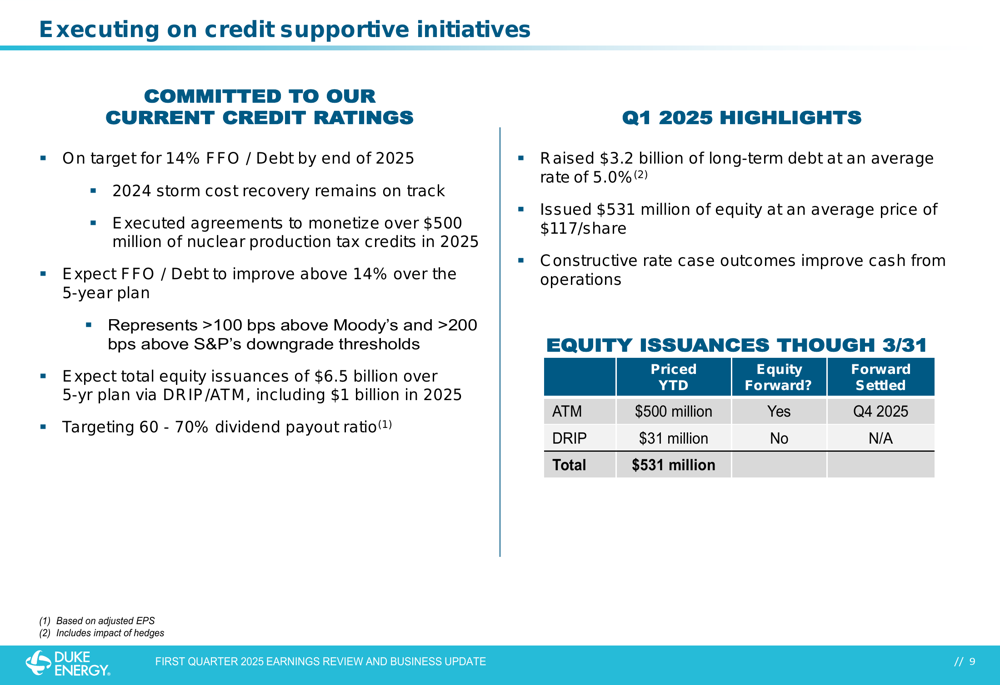
Regulatory Environment and Market Positioning
Duke Energy emphasized its strong track record of regulatory execution across its service territories. The company noted that approximately 90% of its electric segment capital investments are eligible for modern recovery mechanisms, which helps mitigate regulatory lag. These mechanisms include riders, rate cases with forecasted test years, and multi-year rate plans.
The company’s regulatory recovery mechanisms are illustrated in this breakdown:
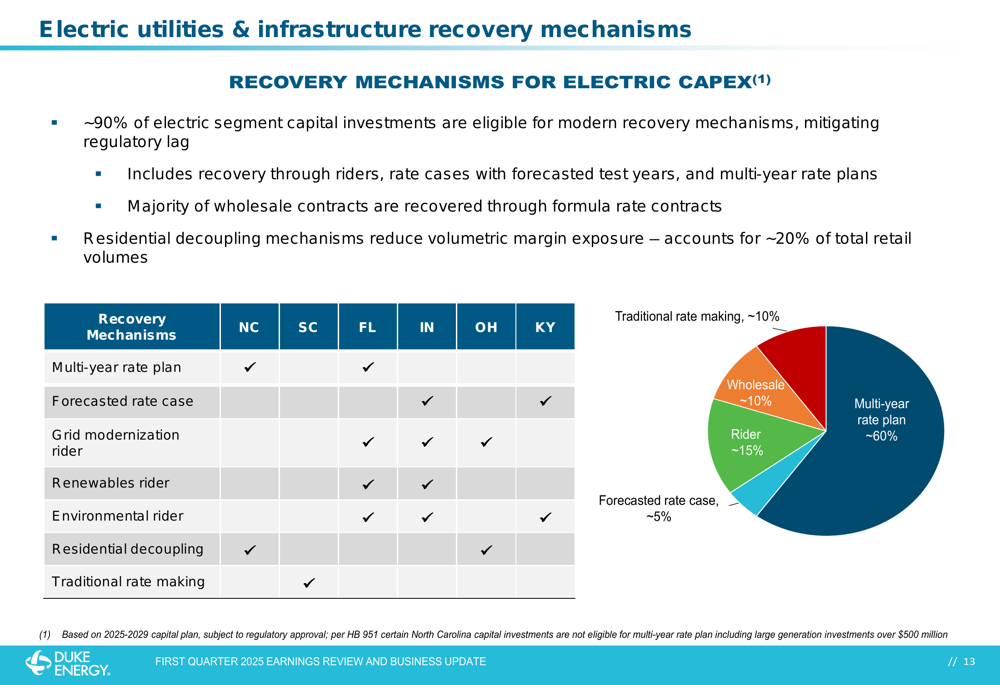
In the Carolinas, Duke Energy expects to file DEC/DEP merger applications with the FERC, NCUC, and PSCSC later this year and remains on track to complete storm cost securitizations in 2025. In Florida, the company implemented year one of a multi-year rate plan in January and received approval to recover storm costs over 12 months. In Indiana, a rate case order was issued in January with rates effective in late February (step 1) and Q1 2026 (step 2).
Investor Value Proposition
Duke Energy presented its investor value proposition, highlighting a 3.4% dividend yield (as of May 2, 2025) and a long-term dividend growth commitment. Combined with the 5-7% EPS growth target, the company projects an approximately 10% total shareholder return.
The company’s value proposition is summarized in this visual:
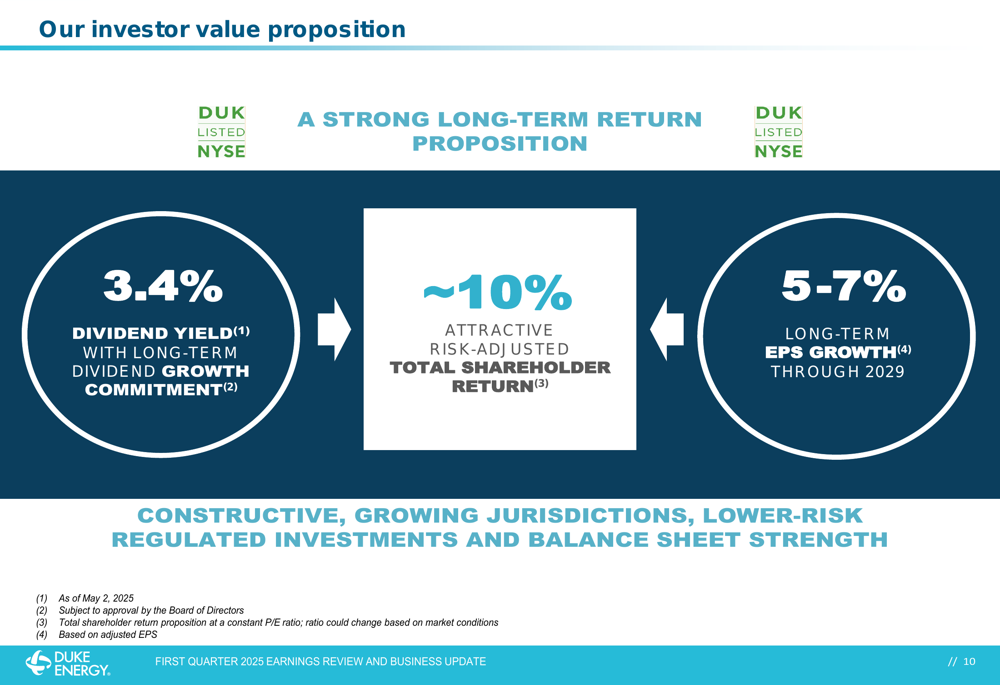
Duke Energy’s strong Q1 2025 performance represents a significant improvement from its Q4 2024 results, which saw the company miss analyst expectations with an EPS of $1.66 against a forecast of $1.68. The stock has recovered from its post-Q4 earnings dip, with shares trading at $120.75 as of May 5, 2025, approaching the upper end of its 52-week range of $99.21 to $125.27.
With its robust pipeline of economic development opportunities, particularly in data centers and advanced manufacturing, Duke Energy appears well-positioned to capitalize on growth in its service territories while maintaining its focus on grid modernization and generation diversity.
Full presentation:
This article was generated with the support of AI and reviewed by an editor. For more information see our T&C.
